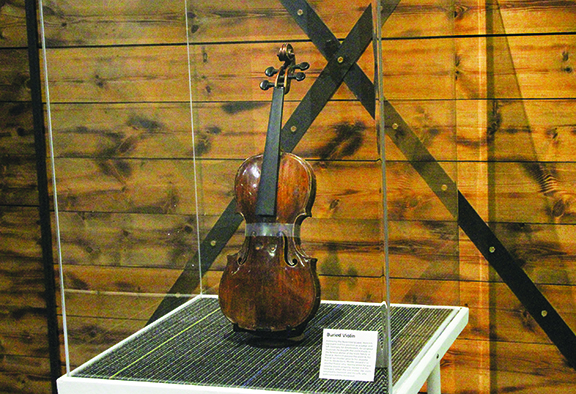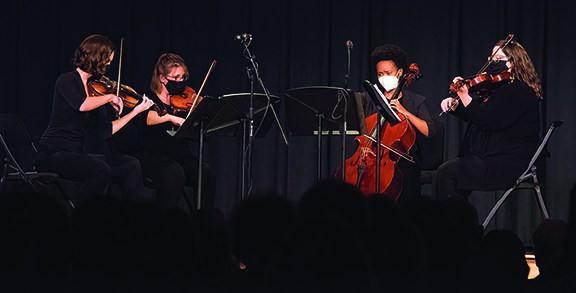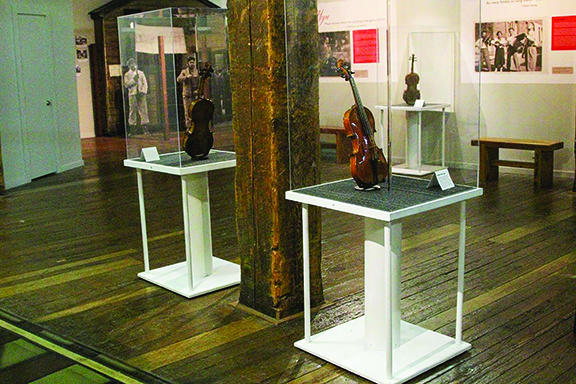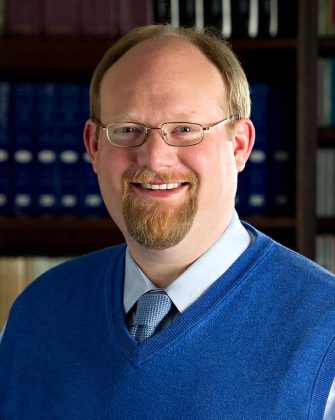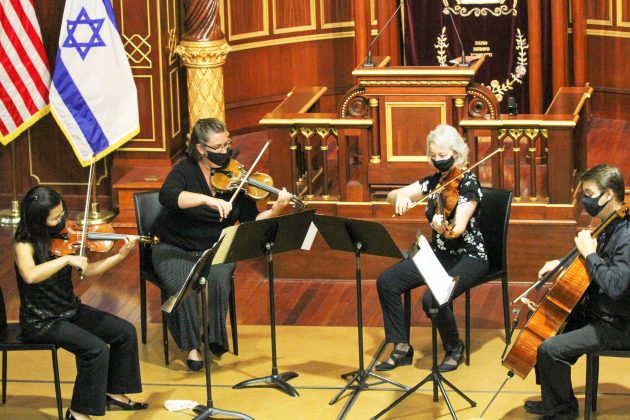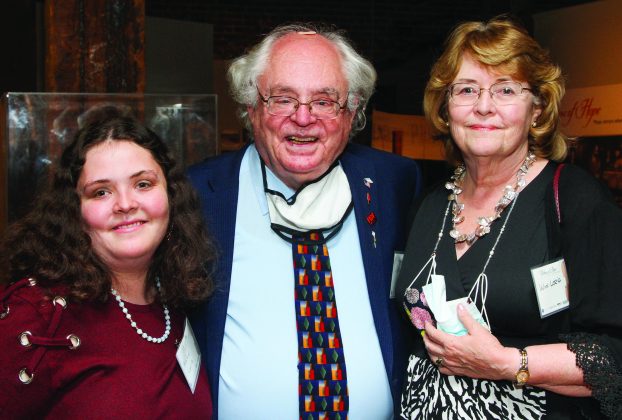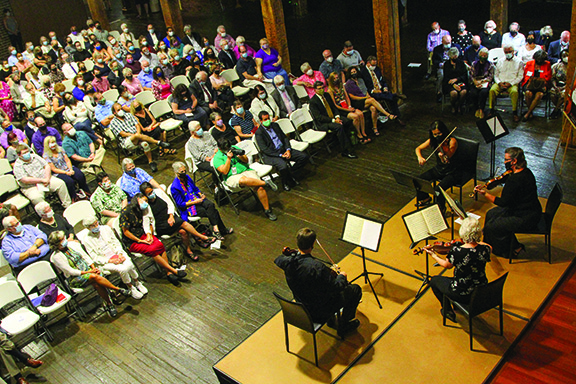
By Skip Kozakewicz, Reflector Editor
Violins of Hope concluded its 12-week stop here on Oct. 24 – helping to tell the stories of defiance, resilience and survival of the Jews who endured or perished in the Holocaust.
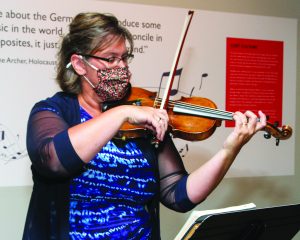
All photos by Adrienne Winkelmann Epstein
Sponsored by the Virginia Holocaust Museum, it arrived in Richmond in early August for the first time and experienced a large turnout of people at three museums, special events, lectures, and a number of sold-out community concerts.
Violins of Hope features a collection of restored violins that were played by Jewish musicians during the Holocaust. These inspirational string instruments have survived concentration camps and long journeys to share their stories.
VHM Executive Director Samuel Asher, said that the violins helped people comprehend the devastation of the Holocaust, when six million Jews were methodically killed by the Nazis.
“It’s hard to understand the Holocaust en masse, but we can understand one story at a time.”
Power of Musicians
Asher also described the power of seeing musicians play the restored violins.
“When the symphony plays the same violins that made it through the Holocaust — some of their owners survived and some did not — it’s mind-blowing. There is so much meaning to it, so much depth.”
He noted, “That’s the bottom line of ‘Violins of Hope.’ Every violin tells a story.”
Asher said planning for Violins of Hope here began four years ago.
“What we planned initially actually was expanded several times, and I am so pleased with were able to partner with the two other museums and the Richmond Symphony.
Violins of Hope was initiated by Amnon Weinstein, a Tel-Aviv based violin maker, upon learning that 400 of his relatives had died in the Holocaust as a way to reclaim his lost heritage, give a voice to the victims and reinforce positive messages of hope and harmony. Together with his son Avshalom, they have located and restored violins from around the world and brought the collection to several U.S. cities.
Former Richmonder, Dr. James A. Grymes, author of the book, Violins of Hope: Instruments of Hope and Liberation in Mankind’s Darkest Hour (Harper Perennial, 2014), was a guest speaker virtually at several of the Violins of Hope events and 5400 Club at the Center.
He told the Reflector recently that he became aware of Violins of Hope when preparations were being made for a 2012 exhibit in Charlotte, N.C. This was to be the first exhibit in the U.S.
A professor of Musicology at the University of North Carolina at Charlotte and VCU graduate, he learned some of his colleagues and administrators at the Charlotte college were assisting in exhibit preparations.
He quickly became fascinated and inspired with the concept of Violins of Hope and began gathering information.
In describing why he pursued writing the book, he explained.
“As a music historian I found it so unlike anything I had ever heard about. It was simply astounding. Music is something I love and dedicated my life to … but (I learned) the idea that music could not only be life-enriching and life-confirming, but life-saving was so profound and inspirational to me.”
He continued, “Through phone calls and emails over a period of time with Amnon (Weinstein), I decided to get on a plane to go to Israel in 2011.”
Tel Aviv Workshop
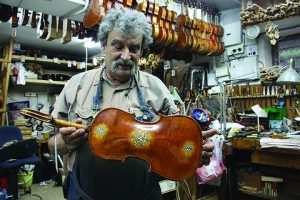
Grymes said, “The workshop is in Tel Aviv, and it’s like walking into some type of time machine. It is pretty much like his father had it who established it in 1938.”
He added, “Violins were hanging from strings everywhere and there were violin parts and wood all over. The smell of the varnish and the glue permeated the whole building. There was no example of modern technology only many hand tools that were decades old.”
He gathered information from Amnon who had some notes from those who had left the violins there and who also recalled conversations he had with the family members.
From that information and much more research, he contacted, interviewed and visited family members and others who had more detailed information about the individuals and their violins who made the basis of his book.
“It took some time, and Amnon would call me from time-to-time that he had received another violin. I had to make a decision to stop my research and finish the book.”
The rest is history.

